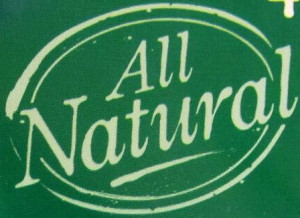A ‘natural’ food label doesn’t really mean much to me. Some equate it with healthier, or using traditional growing and processing methods (whatever that means). There’s research that demonstrates consumers, when surveyed, have a mix of understanding and perception about what natural represents.
USDA has a natural label definition for meat and poultry that involves a mix of no artificial ingredients, no added colors and is only minimally processed which means whatever has happened to it doesn’t fundamentally alter the product.
What I want to know as a buyer and consumer of lots of different foods from retailers and restaurants is how folks are reducing my risk of foodborne illness, whether unnatural or not.
According to The Guardian, a U.S. trade group, the Organic and Natural Health Association (OHNA) is creating a certification system for labeling in the absence of FDA definitions.
ONHA will roll out a certification program, beginning in early 2016, that will offer a “natural” seal that participating companies can put on the front of their product packaging.
The seal comes after years of criticisms and lawsuits against food manufacturers such as Welch’s for allegedly misleading consumers with ambiguous package labels that do not necessarily accurately reflect the food contained inside.
“It became clear to us that we just needed to define ‘natural’ as what it was,” ONHA CEO Karen Howard said. That’s because the Food and Drug Administration (FDA), which regulates food labeling, “has not developed a definition for use of the term natural or its derivatives,” according to its own materials. The FDA also does not object to the use of the term on products with “added color, artificial flavors or synthetic substances.”
The seal would not be a government-approved package label, but rather a self-selecting way for manufacturers to help consumers better understand the contents and production of foods. The program would be voluntary and overseen by ONHA.
Companies will have to pay a small fee for the seal and must pay to go through the compliance process themselves.
A study conducted by the Rudd Center for Food Policy & Obesity at Yale Univeristy found that nutrition-related claims mislead consumers in unexpected ways, with packaging claims promoting their ingredients are more nutritious than similar products without such claims. The study also found that package claims made consumers think they could gain health benefits even beyond those suggested by the manufacturer.
Jennifer Harris, the lead author of that study, said that consumers were often skeptical of direct claims from manufacturers, but through inference often persuade themselves into believing that an unhealthy product could have a positive health outcome.
How about some meaningful safety labels.
